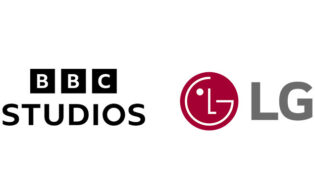Roku Media’s head of content, David Eilenberg, discussed the strategy that is winning viewers over to The Roku Channel as the FAST Festival continued today.
Eilenberg showcased Roku’s strategy across originals and acquisitions in the U.S. and internationally in conversation with World Screen’s Anna Carugati. You can watch the session in full here.
“The Roku Channel is now a top-ten streaming service according to Nielsen in all of the U.S.,” Eilenberg said. “We have a very broad general entertainment offering in both on-demand and FAST. The critical thing that’s been the secret to our success from the beginning is that we are completely free and ad-supported. That was the genesis of The Roku Channel, and that proposition to the viewer, which is entertainment for free, has continued to resonate.”
Eilenberg then discussed Roku’s move into original content over the last few years. “The food and home categories have both been really important for us, and the latter began with the acquisition of This Old House, which is a brand that we’re really proud of. In food, we have a number of originals, but one of our big tentpoles that people would know is The Great American Baking Show, which is the U.S. format version of The Great British Bake Off. Comedy has been great for us. That started with Weird: The Al Yankovic Story, which is the “Weird Al” Yankovic biopic with Daniel Radcliffe, for which we won an Emmy. And then, like so many people, we’re programming around sports and finding our way in that increasingly important realm.”
In terms of what’s resonating with audiences, Eilenberg said that The Roku Channel’s viewers tend to be seeking “light, bright, enjoyable general entertainment fare. That’s been our original strategy to date.”
The acquired slate, however, extends across multiple genres. “We have thousands of titles within The Roku Channel, both on-demand and in FAST. When you find a motivated fandom, you want to super-serve it, and that can be for a genre or a single title. One of the interesting things about how the FAST universe has evolved is how successful certain single-title channels have been. We’re continuing to see opportunities to bring those forward for our viewership.”
Eilenberg stressed the broad reach of Roku as an operating system for delivering streaming services to homes, “which means if we do want to promote something in a mass way, whether it’s on our own behalf or for a content partner, we’re able to. But then, as you get deeper down into the funnel, we want to personalize and serve up recommendations that we think you’re going to enjoy based on what we’ve seen from your viewing habits. It’s a balance between those two things—mass reach on the one hand and personalization on the other—and it’s about how you program different touchpoints within the user experience.”
Discoverability remains a challenge, Eilenberg continued. “We’ve taken our curatorial responsibilities seriously. At the platform level, we’re building zones that aggregate content from certain areas, not just our own but as many of our partners as we can. We heard from our consumers that sports was disaggregated and hard to find, so discoverability was becoming more challenging. As a platform, we took the first responsibility not just to put people into our ecosystem but really to wherever they wanted to go. We’ve now repeated that formula with the food category and the home category. These curatorial tools are of great service to the viewer.”
Eilenberg’s broad remit at Roku includes oversight of the Roku Brand Studio, “a unit devoted to helping advertisers tell stories that are more narrative length,” he explained. “The 30- and 15-second spots are always going to be important to any advertisers’ plans, but we are starting to see an uptick in advertisers and media agencies wanting to be directly involved in longer-form storytelling, whether that’s in documentary, specials and perhaps going forward even in scripted series. That’s a place where the worlds of content and advertising directly overlap. We’re trying to become a good home for advertisers to come tell stories that are important to them.”
Eilenberg went on to discuss the importance of curation–both human and AI-driven. “Like everybody in streaming, we have machine learning, and we’re proud of it and its ability to surface content for viewers based on what their preferences have been to date. But at the same time, you still need the ability to announce something new, put it in front of people and create those sampling experiences. That’s just in the service of surprise and delight, which are core Roku tenets to begin with. You still want to give people the opportunity to sample something that they may not have even thought to try before.”
On the prospects for more AVOD and FAST originals across the landscape, Eilenberg noted that “international co-production is going to be incredibly important over the next few years. You look at places where a lot of scripted fare is being made, and you start to wonder how we can start working more globally to put new projects together. I do think that that’s going to be one of the solves that people look toward.”
Discussing the path ahead for Roku over the next year, Eilenberg said: “We’re going to continue to invest in core categories. I am encouraged by the growth of The Roku Channel Mexico, which is our newest version of The Roku Channel, launched in October 2022 and growing by leaps and bounds. I want to see where that leads us. Then, continue to figure out how to engage with the advertiser community more deeply and understand what it means to be an ad-supported service in 2024 while always keeping the viewer first in mind.”






